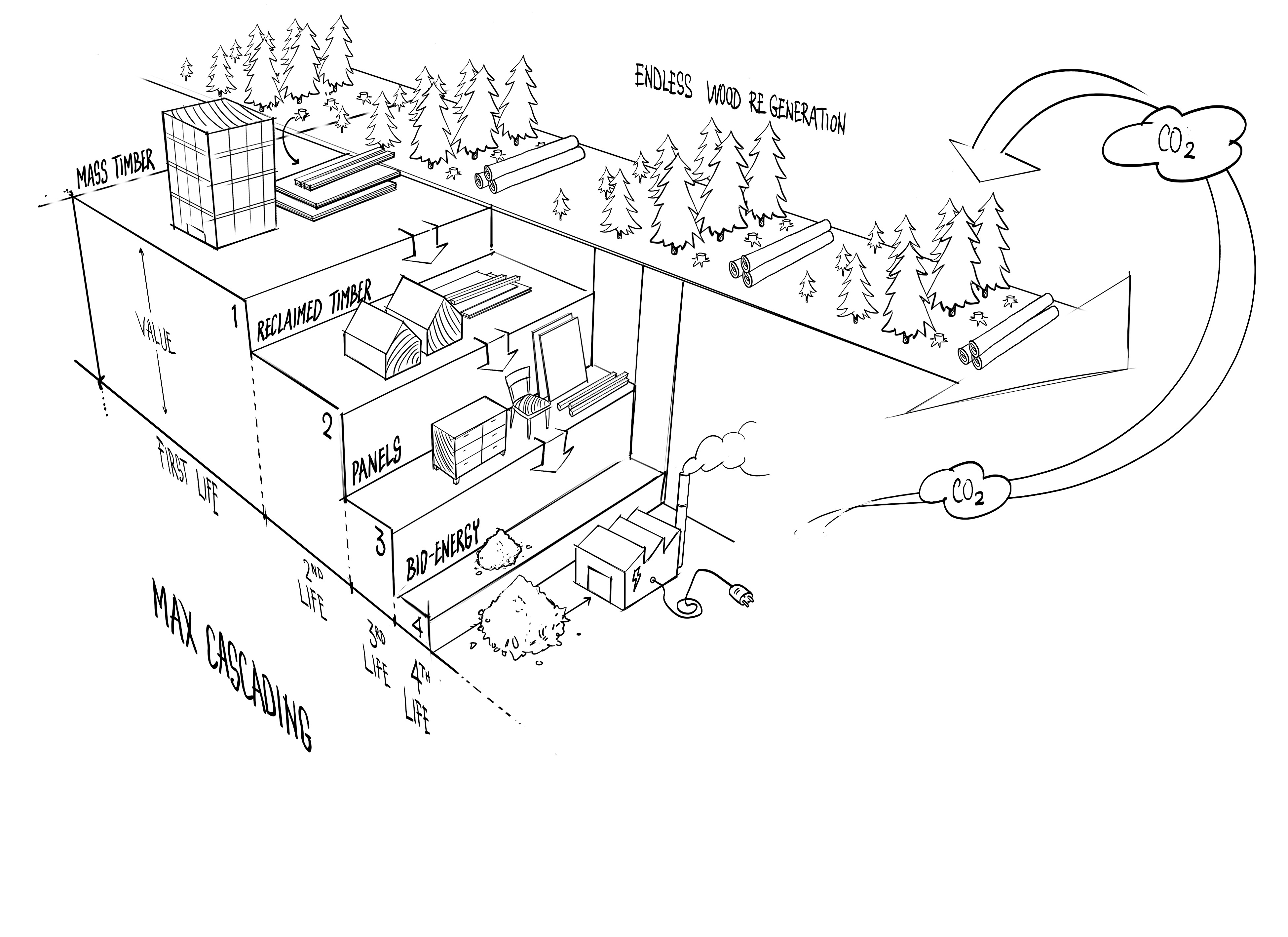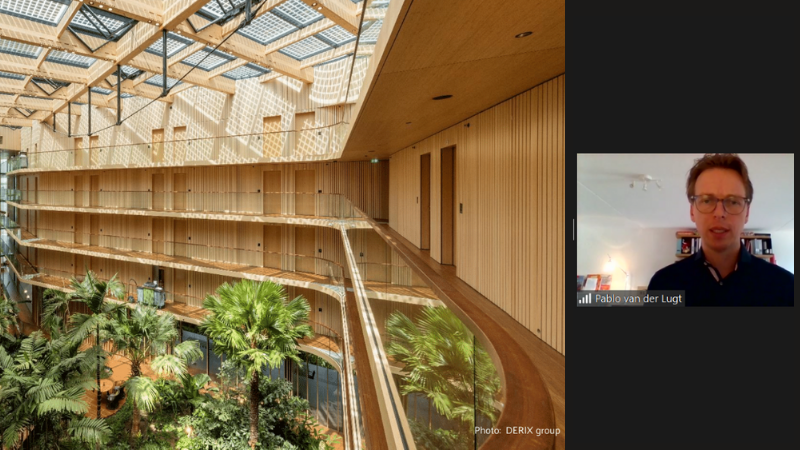Tomorrow’s Timber Talks
Tomorrow’s Timber Talks
Construction event
We were delighted to welcome over 200 attendees to last week’s Tomorrow’s Timber Talk, seeing a presentation of the newest, highest and most impressive timber construction projects around the world.
Architectural engineer Pablo van der Lugt took us on a journey through the centuries and into the future, showcasing the huge potential of mass timber construction and rectifying prevailing myths.
The webinar covered key points from his book Tomorrow’s Timber – Towards the Next Building Revolution.
Combating climate change

“Over 30% of the global greenhouse gas emissions are caused by the built environment. This means a great responsibility for architects and others working in the sector,” Pablo explained.
“The global use of concrete causes more CO2 emissions than a country like India.”
While the production of concrete and steel emits large amounts of CO2, timber does the opposite: it stores carbon. When trees grow, they sequester carbon in their biomass, where it stays, even after a tree has been felled.
“Timber can lock in one tonne of CO2 per m³,” Pablo explained. “Additionally, replacing one ton of concrete or steel with one ton of timber avoids 1.5 tons of CO2.”
Is there enough wood?
 Tomorrow’s Timber www.tomorrows-timber.com
Tomorrow’s Timber www.tomorrows-timber.com
Another burning question discussed in the webinar was the supply of wood.
But while deforestation continues to be a problem in the Southern hemisphere, in the Northern hemisphere the forest area is growing.
“A big wooden family house requires about 60 m³ timber – the amount that grows in Europe’s forests in only 20 seconds,” Pablo explained.
In addition, timber elements can be re-used at the end of their lifetime, giving them a second and third life in the built environment, before being used to produce bio energy.
“By the end of the timber’s lifetime, the forest has already grown back three to four times,” he pointed out.
“We are on our way to a new timber revolution in construction. But using certified timber from sustainably managed forests is an absolute precondition!”
A unique building material
 Hotel Jakarta in Amsterdam
Hotel Jakarta in Amsterdam
Pablo also highlighted the benefits and unique properties of timber.
Thanks to its lightness and easy workability, building elements can be prefabricated in a factory and assembled on site.
This significantly reduces construction time, and makes the construction process safer and quieter, with fewer on-site deliveries and 50- 70% less on-site staff.
“The nearly 200 units for the Hotel Jakarta in Amsterdam were completely prefabricated off-site. Mounting them on site took only two weeks,” Pablo explained.
“Similarly, for the world’s highest wooden building, Mjøstårnet in Norway, using prefabricated mass timber elements reduced the construction time by about a year, compared to traditional building.”
What is more, living and working in timber buildings benefit our health and wellbeing. Timber can have a calming effect, lower the heart rate and blood pressure, and help concentration.
“Students have better concentration when studying in a room in which wood is shown,” Pablo highlighted. “Timber can lead to higher workplace satisfaction when used in offices, and to better healing when used in hospitals and cancer centres.”
“Timber is not only suitable for prestigious construction projects like Hotel Jakarta and Mjøstårnet. The challenge to accelerate building with timber lies with residential construction projects,” he concluded.